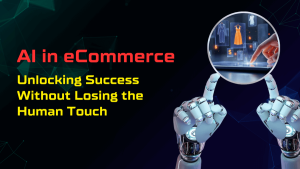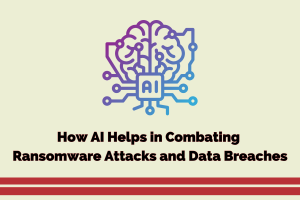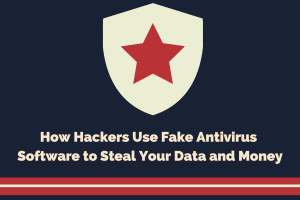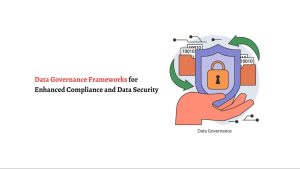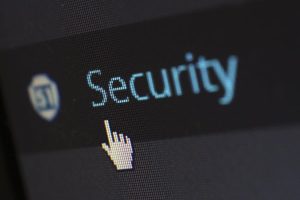AI-Powered Cybersecurity Trends in 2025: A Game-Changer for SEO and Website Security

The field of cybersecurity is going through a dramatic shift in the year 2025, driven mainly by developments in artificial intelligence (AI). Artificial intelligence (AI) brings new problems even though it provides strong tools for security. Cybercriminals are using AI to create more effective assaults.
Let’s examine the forthcoming AI cybersecurity trends that will shape 2025.
The Increase of Fake Identity Fraud and Social Manipulation
Con artists use artificial intelligence to clone voices, change films, or invent identities to conduct online fraud and deceit or to pass identity verification tests. This kind of fraud is known as synthetic identity fraud and is anticipated to reach a new peak around 2025.
Similarly, thieves can produce false movies and audio of top executives telling staff to expose critical information or transfer payments using artificial intelligence. These videos and audio will be more lifelike than ever before.
Artificial intelligence will allow attackers to scan and analyze large volumes of data about their intended victims, resulting in the development of social engineering assaults that are specifically customized to particular people.
Deepfake Technologies Development
Technologies that use deepfakes will undoubtedly progress and become more realistic. However, attackers will continue to abuse deepfake technologies to extort money, socially engineer individuals, disseminate misinformation, destroy reputations, and penetrate organizations.
Although it may take some time for fraud detection systems to grow and improve to the point where they can identify deepfakes in real time, it is possible that by 2025, deepfake detection technologies will become more practical and accessible.
Privacy and Ethics Emerge as Major Concerns
The extensive application of AI to analyze information and identify peculiar patterns in human behavior and data will result in privacy and consent concerns. Additionally, challenges will arise regarding discrimination, biases, reputational harm, and false positives. Is it possible for the AI to mistakenly identify a falsehood as truth or label authentically honest behavior as malicious? However, what if an adversary manipulates or poisons the data, causing AI systems to behave unpredictably?
Striking a balance between security, accuracy, transparency, and privacy will be a significant problem for AI developers, regulators, and organizations in 2025 and beyond.
Zero Trust Architecture
Zero Trust Architecture (ZTA) is a crucial framework for contemporary enterprises; the foundation is the idea of “never trust, always verify.” Protecting access to sensitive information is of the utmost importance in light of the growing prevalence of hybrid and remote work settings.
ZTA can function by validating people and devices at each access point, eliminating any implicit trust inside a network. Fortinet’s Zero Trust solutions provide comprehensive access control techniques to prevent illegal access to data. These mechanisms include multi-factor authentication (MFA), device verification, and real-time monitoring.
The Rise of Ransomware-as-a-Service (RaaS)
Another growing threat on the dark web is malware-as-a-service (RaaS), where thieves sell pre-built malware packages to unsuspecting victims. One of the most prevalent risks in the modern world is ransomware, which can be implemented more easily with the help of these kits.
Businesses may get help from solutions like Proofpoint, which provides top-notch tools for detecting and preventing ransomware attacks. Proofpoint helps organizations react effectively to possible attacks by identifying them early and exploiting threat information.
Quantum Computing and Crypto Agility
Quantum computing with GenAI could “catapult the capabilities of artificial intelligence into a realm wherein it can solve complex issues faster, create more advanced and nuanced outputs, and uncover mysteries in multiple fields. This would be a tremendous advancement in artificial intelligence. The same holds true: something might have positive and negative outcomes.
NIST provided early sets of post-quantum encryption standards. Systems administrators are advised to make the changeover “as soon as possible,” the second set of algorithms is already under development at NIST.
As a result, in 2025, crypto agility will be a key business need, and large businesses will start to establish crypto centers of excellence. Large businesses must remain (or become) crypto-agile to keep up with quantum-resistant encryption.
B2B Identities and Third Parties
With supply chain threats continuing to rise to the forefront of the public’s knowledge about security, the identities of third parties will be subjected to greater scrutiny. As a result of the unavoidable progress toward more digital connection, businesses are broadening their third-party reach, and this tendency will likely continue. External identities will eventually outnumber internal identities.
As a result, organizations will need to comprehend business-to-business (B2B) identities more, as this domain has not received sufficient attention in the past. We foresee a shift in this trend in 2025 when B2B identity security becomes a more central focus in enterprises’ strategic security plans.
Shadow AI
Further questions are raised when “shadow AI” within companies—denoting illegal AI models employed by staff members without sufficient control—emerges. Unregulated technology emphasizes the need for well-defined regulations managing artificial intelligence and people development, as it may lead to data breaches and compliance problems.
Best Practices for Securing Your Website
Implement Multi-Factor Authentication (MFA)
MFA enhances security by requiring users to authenticate their identities using multiple authentication methods, including passwords, biometric verification, and security tokens. It guarantees that sensitive accounts cannot be accessed without secondary verification, even if a criminal steals credentials.
Regularly Update Software and Plugins
Cybercriminals often take advantage of software flaws and out-of-date plugins.
Set up an automatic updating system to regularly fix all of your plugins, themes, and software.
Use AI-Driven Tools for Real-Time Threat Detection
Security solutions powered by AI monitor website traffic patterns closely, looking for unusual activity or suspicious threats. Machine learning algorithms aim to prevent potentially devastating cyberattacks.
Conduct Regular Security Audits.
When it comes to cybersecurity, a proactive strategy means conducting frequent security audits and ethical hacking, also known as penetration testing, to locate vulnerable areas.
Encrypt Data with SSL/TLS Protocols
SSL/TLS encryption protects private data from being compromised by attackers during user data transfers from your website. Using HTTPS instead of HTTP is essential for safe browsing.
Final Thoughts
2025 marks a significant milestone in cybersecurity, with artificial intelligence acting as both a defense tool and a conduit for advanced threats.
Adapting AI will not be the sole factor determining its success; thorough knowledge of AI-related security events will be crucial.
Organizations trying to safeguard their digital assets in this changing environment must first educate themselves about these developments and use strong, AI-enhanced security policies.

